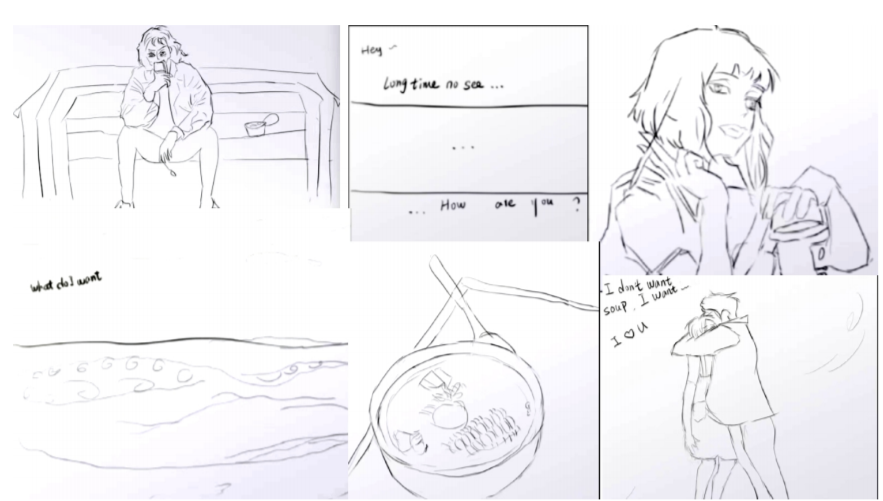
Week 5 This week I learned that most of the story information is conveyed through the characters' actions, reactions, words and thoughts (through visual or auditory means). Actions are usually conscious, considered, edited, and reactions are usually Spontaneous, instinctive and unconscious. The reaction tells us how the character feels about what happened. The Wiki promise is: Do you drink soup or eat it? – confused man at a coffee shop. In the group discussion, I found this to be very graphic. We discussed the movements and personality of the confused man. This man's entanglement about drinking soup or eating shows that he has actually encountered more difficult decisions. He may be an indecisive person who has difficulty making decisions and determinations. He may consider all aspects of life dialectically. If I do this, what will I lose? If you choose this way, will you have the best ending and reward? Obviously he is not a man of action. He might even be a little sluggish and depressed. Considering the above points, it needs to be drawn in the thumbnail to make the audience understand. His actions and expressions need to be exaggerated. At the same time, other characters need to connect with him to set off his withdrawn character, mediocrity, lack of action, just entangled in one thing. One of the team members drew a picture of spring, summer, autumn, and winter. It was raining and snowing. The man was thinking and motionless. I think this is good. But in the process of creating, I took into consideration what I learned in the first few weeks: interesting and attractive plots. Let me describe it in four sentences way. I made a storyboard called "Hug". The main research direction is: expressing the relationship between characters through the details of the characters, not only by forced output by text. I took the group discussion in class and designed "Men's Diet Choices in the Park" as a starting point. The storyboard is upgraded and transformed according to the content of the class and the research direction. I learned in class: Good character design, in essence, is to give the characters conflict. It will cause problems and lay the groundwork for action. ——Brian Robinson ("History of Film and Television", 1993-98. Character-driven stories are usually driven by internal conflicts, which makes it easier to promote the plot. In the early stage of creation, the title was broken down into three elements. Environment: park, role: man, plot: diet choice. But when I look back on the storyboard, I think that the characters have no souls and the story is too plain. Considering what I learned this week: Character-driven stories are usually driven by internal conflict, and the plot makes the plot easier. In plot-driven narratives, the story is about the event, not the character’s reaction to the event. Most conflicts and benefits will be provided by external events. But the characters promote the plot in these stories. Therefore, a new character was added to the storyboard changes, the purpose is to increase the interactive plot to create conflict and plump male protagonist. He expressed his deep love for the heroine by describing the heroine's voice and appearance and the look of reluctance when he was holding the soup. At the same time, through the last scene, the two embraced each other, leaving the specific meaning of this hug to the audience's imagination. In this week's storyboard design and course study, I realized the importance of interaction, whether it is between characters or between characters and objects. Frequent interaction can increase the opportunity for detailed description, strengthen the output of pictures, reduce the output of text, and give the audience more room for thinking.
About This Work
By Guo Bingqian
Email Guo Bingqian
Published On: 19/04/2021
